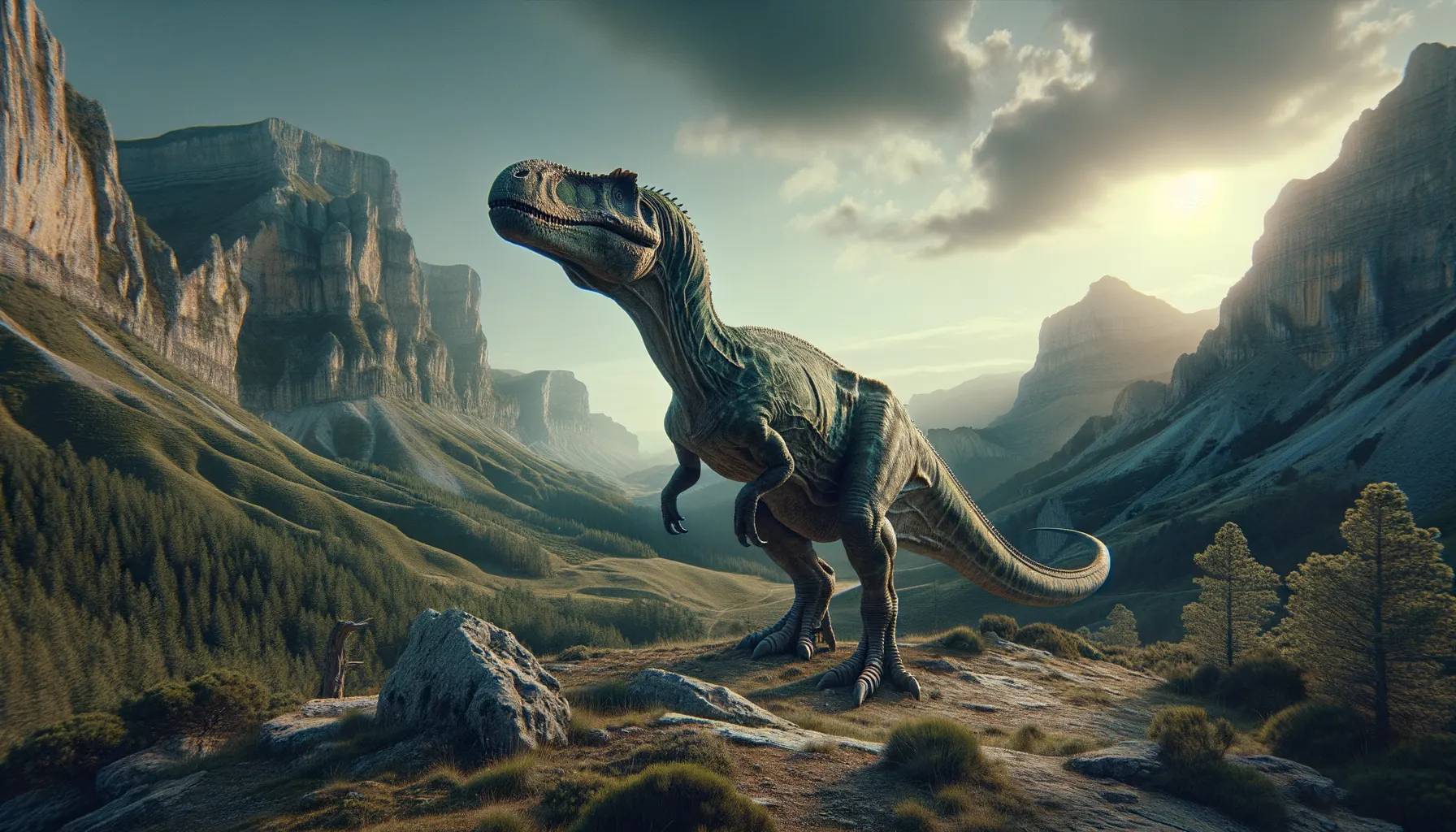
Adynomosaurus
A sturdy survivor of the Cretaceous heights.
Period
Cretaceous
Length
Approximately 6 meters long.
Height
About 2 meters tall.
Weight
Approximately 1,000 kilograms.
Adynomosaurus was a unique herbivorous dinosaur characterized by its relatively small size compared to other similar dinosaurs. It lived during the Late Cretaceous period and was discovered in the Pyrenees Mountains of Spain. This dinosaur's anatomical features suggest adaptations suited to its environment, particularly its sturdy legs possibly adapted for traversing rough, mountainous terrains. The discovery of Adynomosaurus has provided valuable insights into the diversity of dinosaur species during its era.
Diet
Adynomosaurus was a herbivore, primarily feeding on the variety of plants available during the Cretaceous period. Its diet likely included leaves, ferns, and possibly fruits from low-lying shrubs or small trees in its mountainous habitat.
Hunting
Being a herbivore, Adynomosaurus did not engage in hunting behaviors. Instead, it foraged for plants, using its beak-like mouth to crop vegetation efficiently.
Environmental challenges
Living in a region with varied terrain, Adynomosaurus likely faced challenges such as navigating mountainous landscapes, which could impact its movement and food accessibility. Changes in climate and vegetation during the Cretaceous would also have posed survival challenges. Additionally, avoiding predators could have been a significant concern, forcing Adynomosaurus to develop strategies for protection and escape.
Speed
Slow-moving.
Lifespan
Unknown.
First discovery
Discovered in 2018 in Spain.
Fun Facts
- Adynomosaurus was a plant-eating dinosaur that lived during the Late Cretaceous period, approximately 83 to 72 million years ago.
- The name 'Adynomosaurus' means 'powerless lizard', referring to its relatively weak shoulder blades compared to other members of its dinosaur family.
- Adynomosaurus was discovered in the Pyrenees Mountains of Spain, showcasing that Europe was home to a diverse range of dinosaur species.
- This dinosaur is part of the hadrosaur family, which is also known as the duck-billed dinosaurs due to the shape of their snouts.
- Despite its name suggesting weakness, Adynomosaurus was well adapted to its environment, using its beak to graze on plants.
- Adynomosaurus measured around 6 meters (about 20 feet) long, making it a medium-sized member of its family of dinosaurs.
Growth and Development
Adynomosaurus likely experienced significant growth during its early years, maturing into a sturdy creature by adulthood. This growth process would have been crucial for survival, allowing juveniles to quickly reach a size less susceptible to predators. Evidence suggests it may have reached its substantial adult size by focusing its growth on robustness over sheer size.
Habitat
Adynomosaurus inhabited mountainous regions, which provided a variety of plant life and present-day geographic insights suggest an environment rich in biodiversity. The elevation and terrain offered some protection from larger predators but demanded physical adaptations for navigation. Fossils discovered indicate that this region provided adequate resources to support a diverse range of dinosaur species.
Interaction with other species
Adynomosaurus likely shared its habitat with other herbivorous and possibly carnivorous dinosaurs, creating a complex ecosystem. It would have competed for plant resources with other herbivores, necessitating efficient feeding strategies. Cooperating or avoiding interactions with predators and other plant-eaters would have been crucial for its survival.
Natural lifespan
Its natural lifespan remains speculative due to limited fossil evidence.
Reproduction
Like other dinosaurs, Adynomosaurus likely reproduced by laying eggs in nests. The site selection for these nests would have been strategic, possibly choosing hidden or elevated locations to protect from harm. Parental care might have included guarding the eggs and hatchlings from predators and environmental threats.
Social behaviour
It is speculated that Adynomosaurus might have exhibited some social behaviors, potentially gathering in groups for protection or during migration. Social interactions could have included simple communication for warning others of predators or coordinating movements.
Fossil locations
Fossils of Adynomosaurus have been primarily found in the Pyrenees Mountains of Spain, contributing to understanding the geographic range of its species. These findings highlight the presence of diverse dinosaur fauna in this region during the Late Cretaceous period, offering insights into the ecological dynamics of the time.
